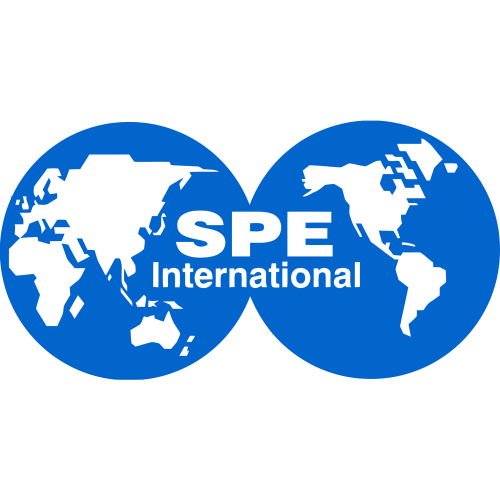From Components to Phase-Dependent Dynamics of Diffusivity in Wax Solutions Subjected to Fluid–Solid Phase Transition: Insights from Pulsed Field Gradient NMR
Publication type: Journal Article
Publication date: 2022-11-21
scimago Q1
wos Q1
SJR: 1.124
CiteScore: 9.5
Impact factor: 5.3
ISSN: 08870624, 15205029
General Chemical Engineering
Energy Engineering and Power Technology
Fuel Technology
Abstract
The evolution of solvent and solute diffusivity during fluid–solid phase transition was studied in model wax in n-dodecane solutions in a wide concentration range. Studied systems were characterized using viscosity measurements to provide supplementary information related to wax precipitation onset, while diffusion coefficients of n-dodecane and paraffin molecules were quantified using Pulsed Field Gradient (PFG) NMR. It was revealed that above the wax appearance temperature (WAT), the Hayduk–Minhas equation adequately predicts the solute and solvent diffusivity. At lower temperatures (below the WAT), three distinct diffusive components appear, which no longer originate from individual molecular components but correspond to a liquid phase differing in terms of association to the wax crystal network. These diffusion components were concluded to contain dodecane and the residual dissolved wax; the major components among them correspond to fluid, which relatively freely diffuses between the wax microcrystals and experiences the hindrance due to the wax gel network, and the minor components correspond to the fluid closely associated with the wax crystals. Unlike at high temperatures, the Hayduk–Minhas equation was found to be unable to predict adequately the diffusivity below the WAT. Using Singh’s approach, the aspect ratio of wax crystals was calculated for different temperatures and concentrations and its complex nonlinear behavior was observed. It turned out that none of the models available differentiate the fluids with respect to the wax crystal network that leaves out of modeling the diffusion components with reduced mobility. The results indicate that the intuitive paradigm of component-dependent dynamics of solvent and solute diffusivity should be changed to phase-dependent dynamics once the system turns into wax gel since the diffusion of separate components becomes the diffusion of separate phases. This understanding shows a new route to improving the wax deposition modeling, which will facilitate an increase of effectiveness of the remedial strategies in the petroleum industry.
Found
Nothing found, try to update filter.
Found
Nothing found, try to update filter.
Top-30
Journals
|
1
2
3
|
|
|
Energy & Fuels
3 publications, 27.27%
|
|
|
Industrial Crops and Products
1 publication, 9.09%
|
|
|
Industrial & Engineering Chemistry Research
1 publication, 9.09%
|
|
|
AICHE Journal
1 publication, 9.09%
|
|
|
Materials
1 publication, 9.09%
|
|
|
Marine Pollution Bulletin
1 publication, 9.09%
|
|
|
Soft Matter
1 publication, 9.09%
|
|
|
SPE Journal
1 publication, 9.09%
|
|
|
1
2
3
|
Publishers
|
1
2
3
4
|
|
|
American Chemical Society (ACS)
4 publications, 36.36%
|
|
|
Elsevier
2 publications, 18.18%
|
|
|
Wiley
1 publication, 9.09%
|
|
|
MDPI
1 publication, 9.09%
|
|
|
Royal Society of Chemistry (RSC)
1 publication, 9.09%
|
|
|
Society of Petroleum Engineers
1 publication, 9.09%
|
|
|
1
2
3
4
|
- We do not take into account publications without a DOI.
- Statistics recalculated weekly.
Are you a researcher?
Create a profile to get free access to personal recommendations for colleagues and new articles.
Metrics
11
Total citations:
11
Citations from 2025:
4
(36.36%)
Cite this
GOST |
RIS |
BibTex |
MLA
Cite this
GOST
Copy
Morozov E. V. et al. From Components to Phase-Dependent Dynamics of Diffusivity in Wax Solutions Subjected to Fluid–Solid Phase Transition: Insights from Pulsed Field Gradient NMR // Energy & Fuels. 2022. Vol. 36. No. 24. pp. 14696-14709.
GOST all authors (up to 50)
Copy
Morozov E. V., Nizovtseva P. V., Martyanov O. N. From Components to Phase-Dependent Dynamics of Diffusivity in Wax Solutions Subjected to Fluid–Solid Phase Transition: Insights from Pulsed Field Gradient NMR // Energy & Fuels. 2022. Vol. 36. No. 24. pp. 14696-14709.
Cite this
RIS
Copy
TY - JOUR
DO - 10.1021/acs.energyfuels.2c02943
UR - https://doi.org/10.1021/acs.energyfuels.2c02943
TI - From Components to Phase-Dependent Dynamics of Diffusivity in Wax Solutions Subjected to Fluid–Solid Phase Transition: Insights from Pulsed Field Gradient NMR
T2 - Energy & Fuels
AU - Morozov, E. V.
AU - Nizovtseva, Polina V
AU - Martyanov, Oleg N.
PY - 2022
DA - 2022/11/21
PB - American Chemical Society (ACS)
SP - 14696-14709
IS - 24
VL - 36
SN - 0887-0624
SN - 1520-5029
ER -
Cite this
BibTex (up to 50 authors)
Copy
@article{2022_Morozov,
author = {E. V. Morozov and Polina V Nizovtseva and Oleg N. Martyanov},
title = {From Components to Phase-Dependent Dynamics of Diffusivity in Wax Solutions Subjected to Fluid–Solid Phase Transition: Insights from Pulsed Field Gradient NMR},
journal = {Energy & Fuels},
year = {2022},
volume = {36},
publisher = {American Chemical Society (ACS)},
month = {nov},
url = {https://doi.org/10.1021/acs.energyfuels.2c02943},
number = {24},
pages = {14696--14709},
doi = {10.1021/acs.energyfuels.2c02943}
}
Cite this
MLA
Copy
Morozov, E. V., et al. “From Components to Phase-Dependent Dynamics of Diffusivity in Wax Solutions Subjected to Fluid–Solid Phase Transition: Insights from Pulsed Field Gradient NMR.” Energy & Fuels, vol. 36, no. 24, Nov. 2022, pp. 14696-14709. https://doi.org/10.1021/acs.energyfuels.2c02943.
Profiles













